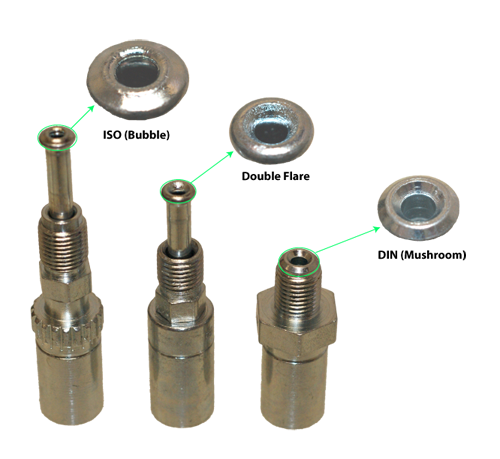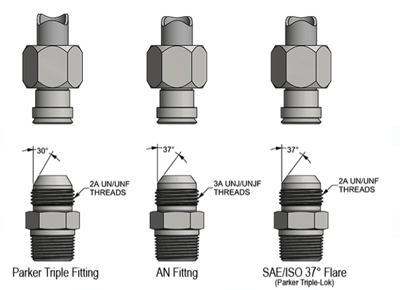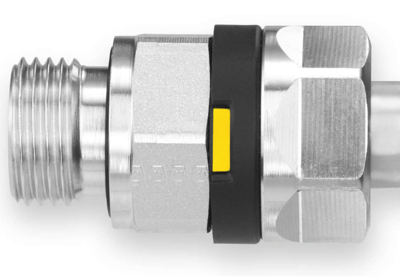How to Identify and Choose the Right Brake Line Fittings

Understanding how to identify and choose the right brake line fittings is crucial for maintaining your vehicle's brake system. This guide will walk you through the different types of brake line fittings, how to identify them, and tips for selecting the best options for your needs.
Types of Brake Line Fittings
Standard Brake Line Fittings
Typically used in domestic vehicles, these feature straightforward designs compatible with most brake systems in North American cars.
Metric Brake Line Fittings
Common in European and Asian vehicles, measured in millimeters with different thread pitches compared to standard fittings.
AN (Army-Navy) Fittings
Used in high-performance and racing applications, known for precision and durability under extreme conditions.
ISO Flare Fittings
Often found in European and Japanese vehicles, these fittings have a 45-degree flare and are used with metric brake lines.
Double Flare Fittings
Common in domestic vehicles, these fittings involve two flares to create a stronger seal, often used in high-pressure applications.
DIN Flare/Mushroom Fittings
Used in some European vehicles, these fittings have a distinctive mushroom-like shape and are critical for certain hydraulic systems.
Brake Line Fitting Identification Table
|
Fitting Type |
Description |
Common Applications |
Measurement Standards |
|
Standard |
Hexagonal shape, simple design |
Domestic vehicles |
Imperial (inches) |
|
Metric |
Precise measurements in millimeters |
European and Asian vehicles |
Metric (millimeters) |
|
AN |
Flared design, high precision |
High-performance and racing |
Imperial (AN specs) |
|
ISO Flare |
45-degree flare, metric lines |
European and Japanese vehicles |
Metric (millimeters) |
|
Double Flare |
Double flare for strong seal |
Domestic vehicles |
Imperial (inches) |
|
DIN Flare |
Mushroom-shaped flare |
European vehicles |
Metric (millimeters) |
How to Identify Brake Line Fittings
Visual Identification
Look for specific markings or shapes that differentiate the types of fittings. For example, standard fittings often have a simple hexagonal shape, while AN fittings might have distinctive flares. ISO and DIN flares have unique flare shapes that can be visually identified.
Measurement Techniques
Use calipers to measure the diameter and thread pitch of the fitting. Accurate measurements will help determine the exact type of fitting needed.
- Diameter Measurement: Measure the outer diameter of the fitting.
- Thread Pitch Measurement: Measure the distance between threads.
- Compare Measurements: Use standard sizes to identify the fitting.
Detailed Brake Line Fitting Specifications
|
Fitting Type |
Diameter (inches/mm) |
Thread Pitch (TPI/mm) |
Application |
|
Standard |
0.25 - 0.5 inches |
20 - 28 TPI |
Domestic |
|
Metric |
6 - 12 mm |
1.0 - 1.5 mm |
European/Asian |
|
AN |
0.25 - 0.5 inches |
16 - 24 TPI |
High-performance |
|
ISO Flare |
6 - 10 mm |
1.0 - 1.5 mm |
European/Japanese |
|
Double Flare |
0.25 - 0.5 inches |
20 - 28 TPI |
Domestic |
|
DIN Flare |
8 - 12 mm |
1.0 - 1.5 mm |
European |
Tips for Choosing the Right Brake Line Fittings
- Understand Your Vehicle's Requirements: Check your vehicle’s manual or consult a professional.
- Consider the Application: High-performance or specific European applications may require AN, ISO, or DIN fittings.
- Quality Matters: Choose high-quality fittings for safety and longevity.
- Compatibility: Ensure compatibility with your brake lines and other components.
Conclusion
By understanding the different types of brake line fittings and how to identify them, you can ensure your vehicle's brake system is properly maintained. If you have any questions or need further assistance, feel free to leave a comment below.
Posted by Marek Bobik & Vincent Lockwood
This article was originally published March 30, 2012, and was last updated September 6, 2024.




